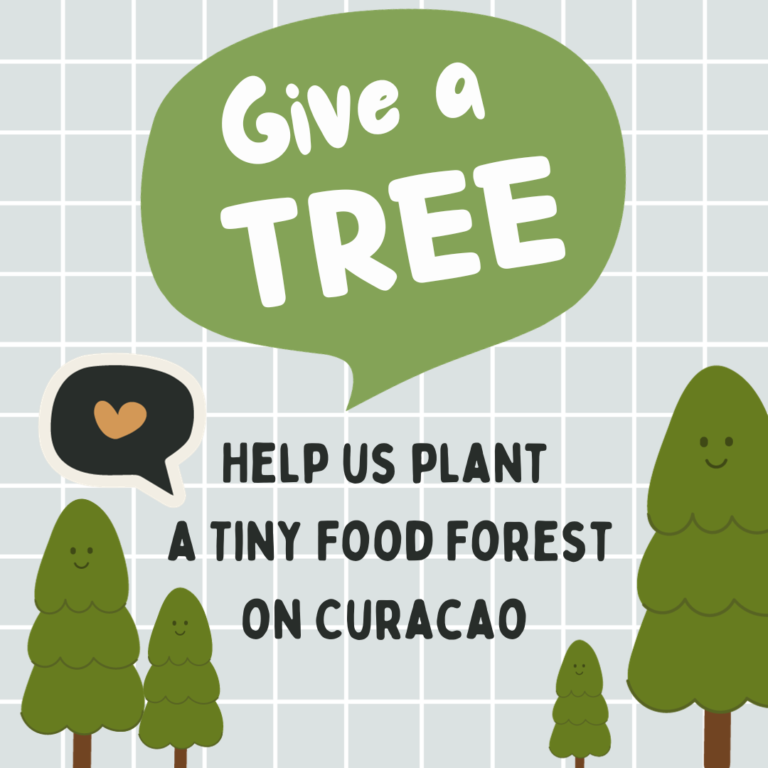Give a Tree & help us plant a Tiny Food Forest on Curacao
A small forest, that fits into the size of a tennis court, can help restore ecosystems. This is a Tiny Forest and we’re planting an edible one!
A Tiny Food Forest, on the school grounds to feed the generations to come, one forest at a time.
Many schools are recognising the benefits that wild areas, school gardens and outdoor classrooms can have on their students and their overall learning experience.
What is a Tiny Forest?
Tiny Forest is a method created by Indian engineer Shubhendu Sharma, based on the method of Japanese Akira Miyawaki to restore natural and native forests.
An Edible Tiny Forest, or a Food Forest is best described as a low-maintenance, sustainable, plant-based food production and agroforestry system based on woodland ecosystems, incorporating fruit and nut trees, shrubs, herbs, vines and perennial vegetables which have yields directly useful to humans.
History of Food Forests
Managing forests for their edible benefits to humans is an ancient practice, with evidence and existing food forests having been found in Africa, Asia, and the Americas.
One of the oldest food forests known to us, dates back to 2000 years ago. Geoff Lawton found a 2,000 year old food forest in Morocco. 800 people farm the desert oasis that includes, among other edible plants, date palms, bananas, olives, figs, pomegranate, guava, citrus, and mulberry. He also found a 300 year old food forest in Vietnam that has been cultivated by the same family for 28 generations.
Why a Food Forest?
Food forests are ‘multi-layered’ by design and will often include a canopy of larger trees, an understory of smaller fruit trees, fruit bushes, herbaceous plants, ground cover species, climbers, and root crops.
The forest garden is self-sustaining as it is planted with species that provide vital nutrients such as nitrogen, through their leaves, roots and seed pods. When incorporating a technique called ‘chop and drop mulching’ students can fertilise the garden with relative ease, reducing the need for expensive fertilisers, while providing a fun and engaging activity.
A well-designed Food Forest will often include a rain garden, to better utilise rainwater runoff from nearby rooftops.
Investigating, observing and researching optimal locations for our plants and trees are an educational opportunity for our students. By mapping out some spots around the school, we get our students involved in the design process.
Many schools are recognising the benefits that wild areas, school gardens and outdoor classrooms can have on their students and their overall learning experience.

Reasons why your school should consider incorporating a school garden or food forest:
Read on to find out how you can be part of our Curacao Food Forest Movement

How you can contribute?
If you are interested in contributing to our Curacao Food Forest Movement please consider donating to our Foundation.
For this programme we are currently looking for
– Watermanagement tools and materials
– Funds to have the trees planted
– Food Forest maintenance tools
– Workshop funding to pass on the knowledge to the next generation
Does this sound good to you?
Please contact us to discuss how you can contribute!
